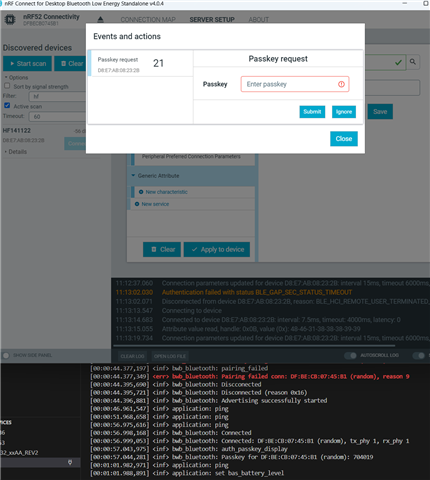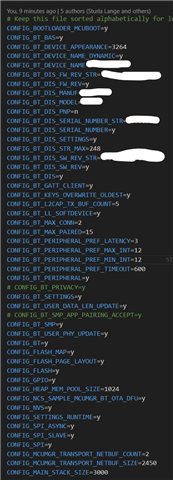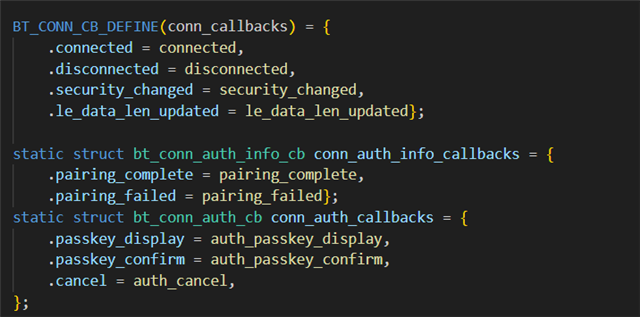Hi,
I recently started upgrading an nRF chip on old SDK to the latest nRF Connect. The device has only one button and currently uses a static passkey (written on the device) while advertising constantly.
I want to make the following updates:
- Limited advertising (advertise only when requested for a set period of time) - This works in my proof-of-concept.
- Confirm pairing using a button press or another unique method.
- Remove the static passkey.
I am able to send a feedback from the device to the nRF chip; however, when attempting to skip the static passkey, I do not achieve security level 3/4 during pairing. Is it possible to configure the chip to acknowledge that the pairing is confirmed/accepted using the button? What approach would you advise?
Best regards,





